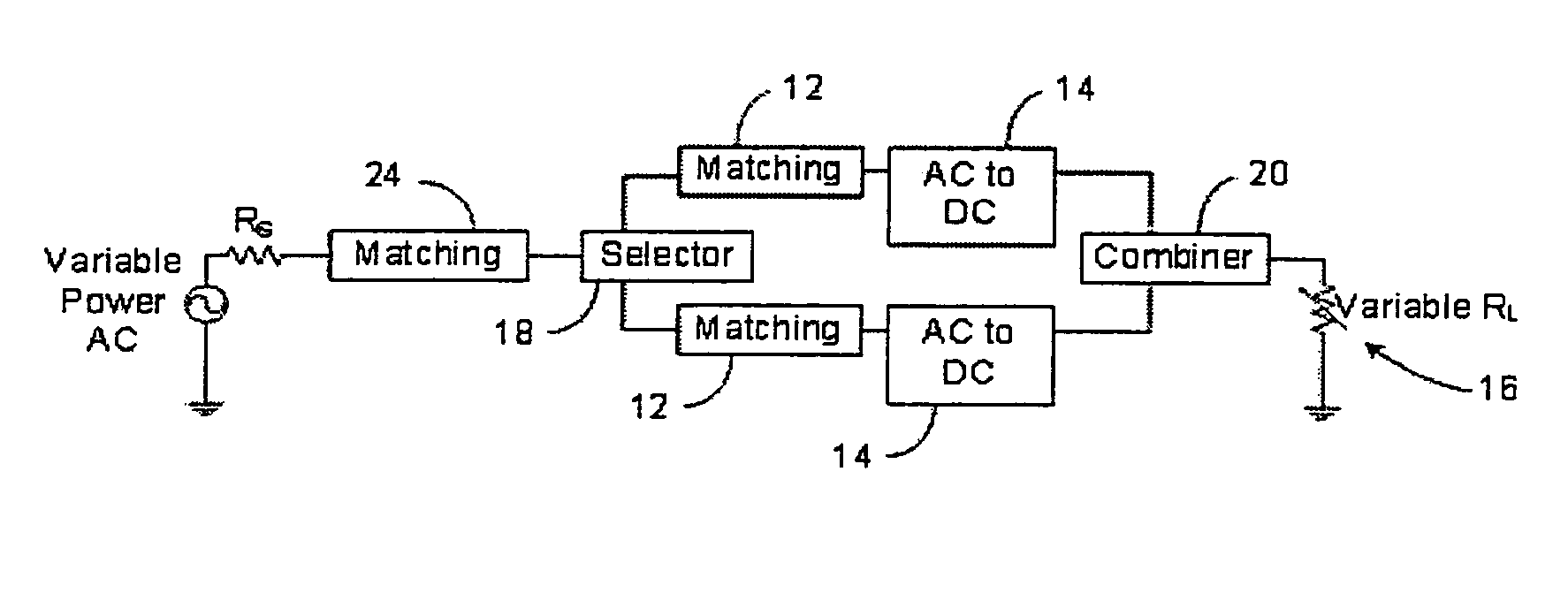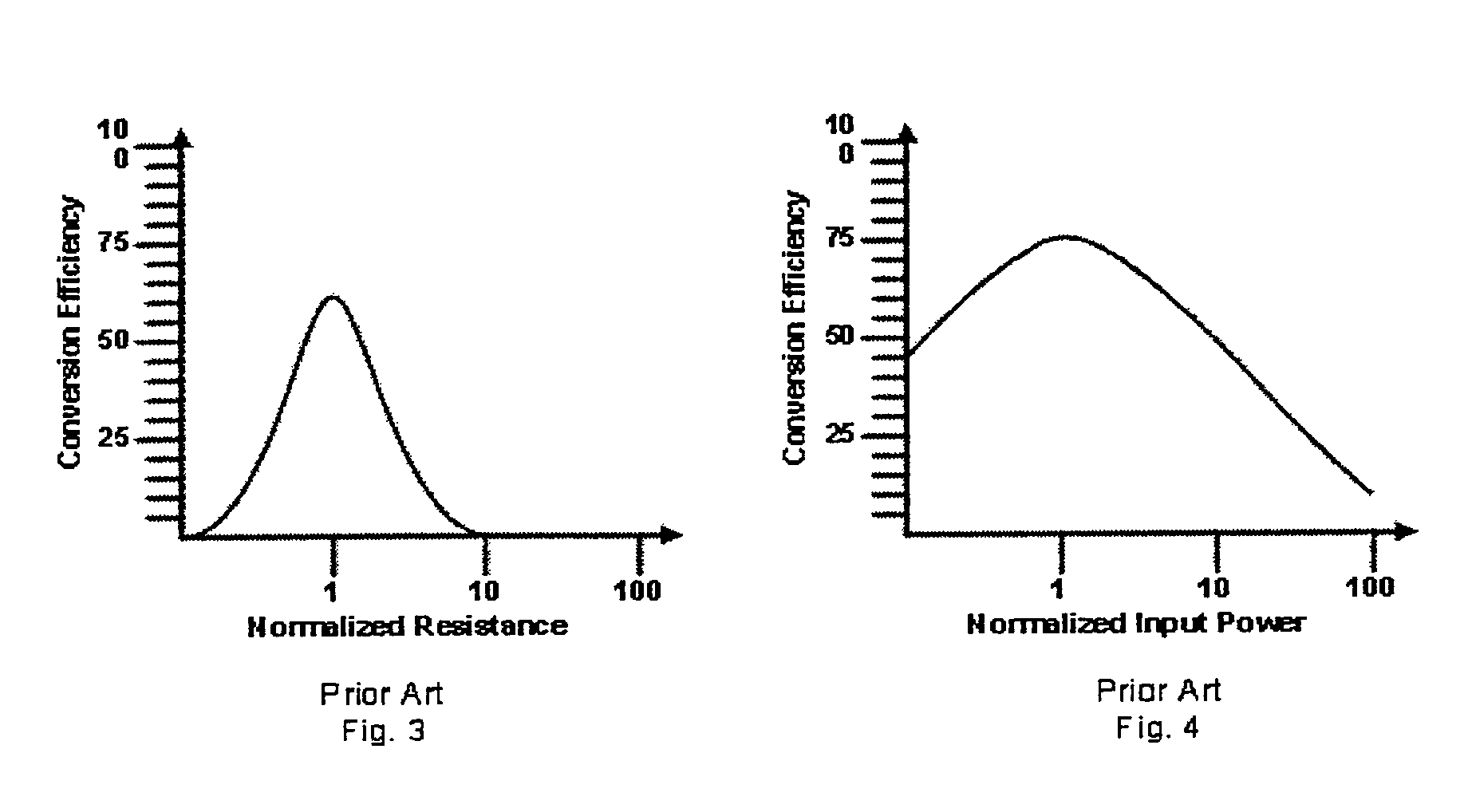Method and apparatus for high efficiency rectification for various loads
a technology of load rectification and load, applied in the direction of circuit arrangement, dc source parallel operation, impedence matching network, etc., can solve the problem of reducing the overall conversion efficiency of the circuit, affecting the load seen by the transmitter, and rarely achieving the optimum power transfer between the external device and the implant device, etc. problem, to achieve the effect of optimal conversion efficiency
- Summary
- Abstract
- Description
- Claims
- Application Information
AI Technical Summary
Benefits of technology
Problems solved by technology
Method used
Image
Examples
first embodiment
[0120]The present invention can be implemented for a number of different combinations. In a first embodiment, the load 16 is fixed at or near the optimal load 16 resistance, which was described above, and the input power is variable. As stated previously, with proper design the AC to DC converter 14 in FIG. 2 can efficiently drive a fixed load 16 over a limited input power range. This can be seen in FIG. 5. However, if it is desired to efficiently drive the load 16 over a larger input power range than can be provided by the prior art or if it is found to be advantageous in other applications where the load 16 is fixed, the invention can be used. A block diagram of an embodiment of the invention can be seen in FIG. 9, where the AC to DC converter includes a selector, two first impedance matching networks 12, two AC to DC converters 14, and a combiner 20 in communication with an input and a load 16.
[0121]As shown in FIG. 9, the input is an AC source with a source impedance, RS, which ...
second embodiment
[0126]A second embodiment for how the invention can be implemented is to have a fixed input power and a variable load 16 resistance, which is shown in FIG. 11.
[0127]In the prior art circuit in FIG. 2, there will be loss described by the Maximum Power Transfer Theorem due to the mismatch of the AC to DC converter 14 output resistance and the load 16 resistance. The corresponding conversion efficiency will be similar to that shown in FIG. 3. The AC to DC converter 14 in FIG. 2 can be matched to loads 16 other than the optimal load 16 resistance to minimize the loss in conversion efficiency caused by input mismatch at that load 16 resistance value. However, there will still be loss in conversion efficiency due to the mismatch between the AC to DC converter 14 output DC resistance and the load 16 resistance and the conversion efficiency will take a shape similar to that shown in FIG. 3. There will also be loss due to impedance mismatch between the impedance of the input and the input of...
PUM
 Login to View More
Login to View More Abstract
Description
Claims
Application Information
 Login to View More
Login to View More - R&D
- Intellectual Property
- Life Sciences
- Materials
- Tech Scout
- Unparalleled Data Quality
- Higher Quality Content
- 60% Fewer Hallucinations
Browse by: Latest US Patents, China's latest patents, Technical Efficacy Thesaurus, Application Domain, Technology Topic, Popular Technical Reports.
© 2025 PatSnap. All rights reserved.Legal|Privacy policy|Modern Slavery Act Transparency Statement|Sitemap|About US| Contact US: help@patsnap.com



